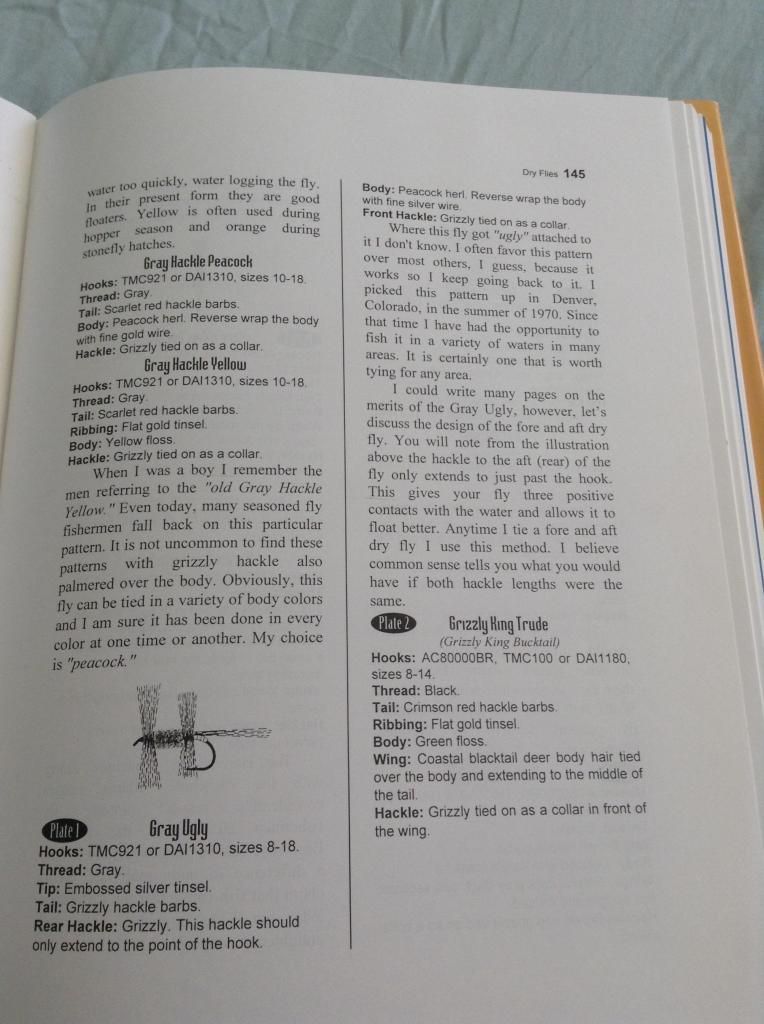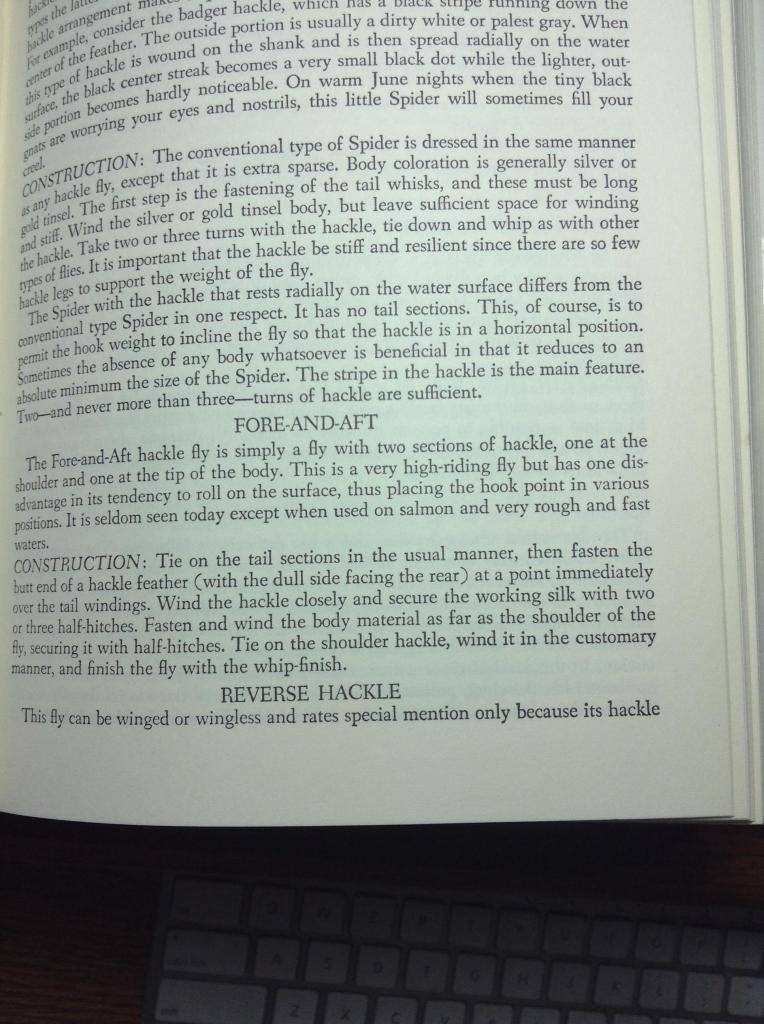To avoid "hijacking" someone's thread, I thought better to start another.
AlanB
I am intrigued with the badger flies you posted. Wonder if you would put them in the category of "Fore and Aft" flies ?
I have had a lot of success with such flies. I believe they may be taken as mating midges?
Seems they are quite popular in the Sieras on this side of the pond. I have had good luck with them nearly everywhere. Walt Powell's grandson was in my fly tying club in the Miidwest. I got some flies tied by Walt himself and he really liked that style of fly and used them often.
Your flies:
An old pattern of mine. I tie it with a slightly shorter hackle at the rear.
My midge cluster with a not-so-smoothe body.....
I apologize for the poor clarity of this photo, but these are the flies I got from Walton Powell. The names are in his handwriting.........
The thing I found interesting about his flies is that he canted the tail fibers down. May have been done due to the size of hackle he used fore and aft?




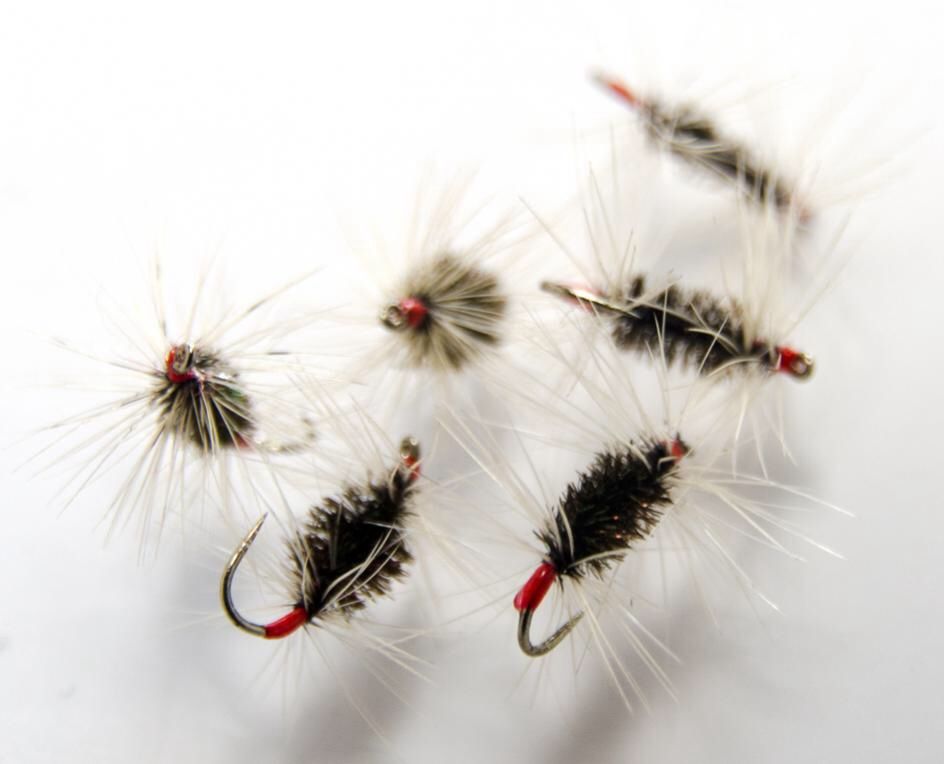
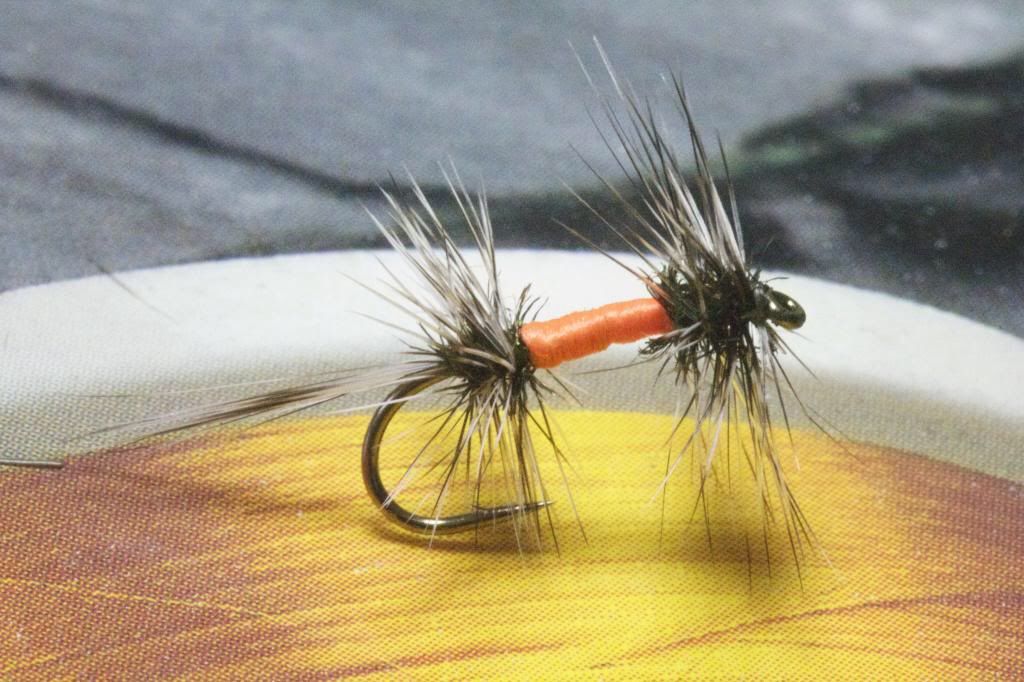
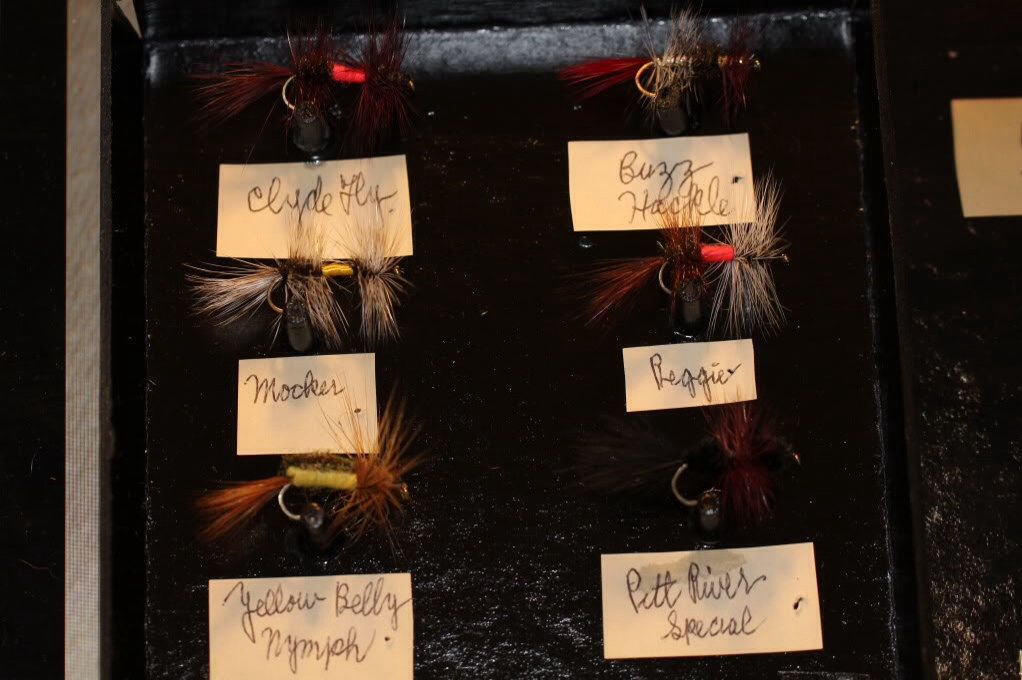
 Reply With Quote
Reply With Quote
